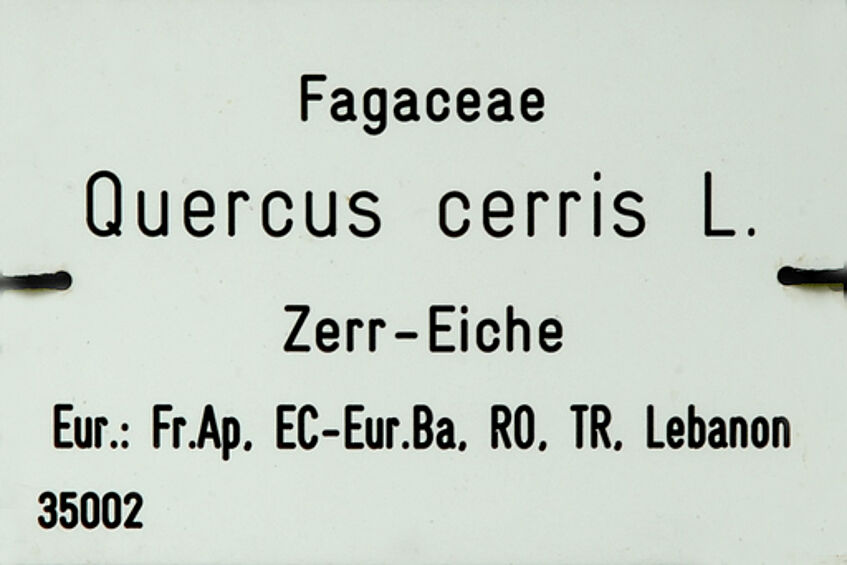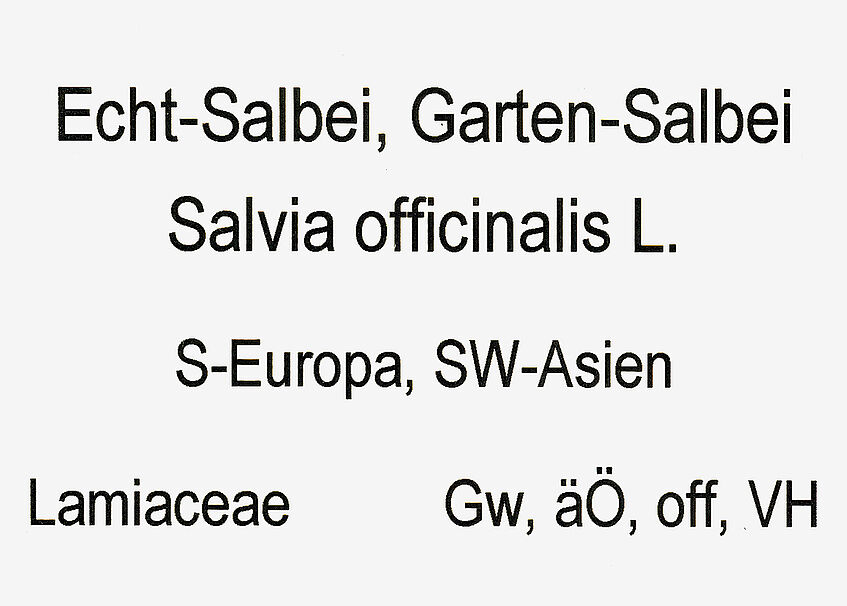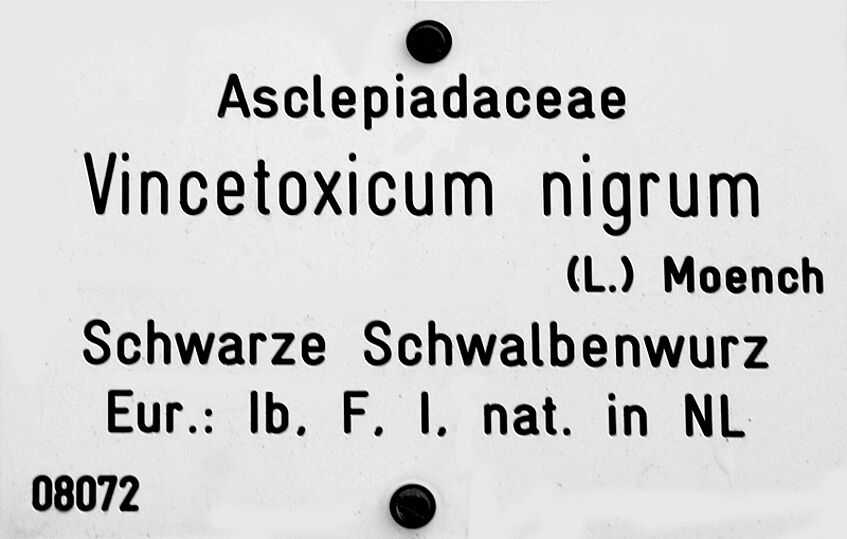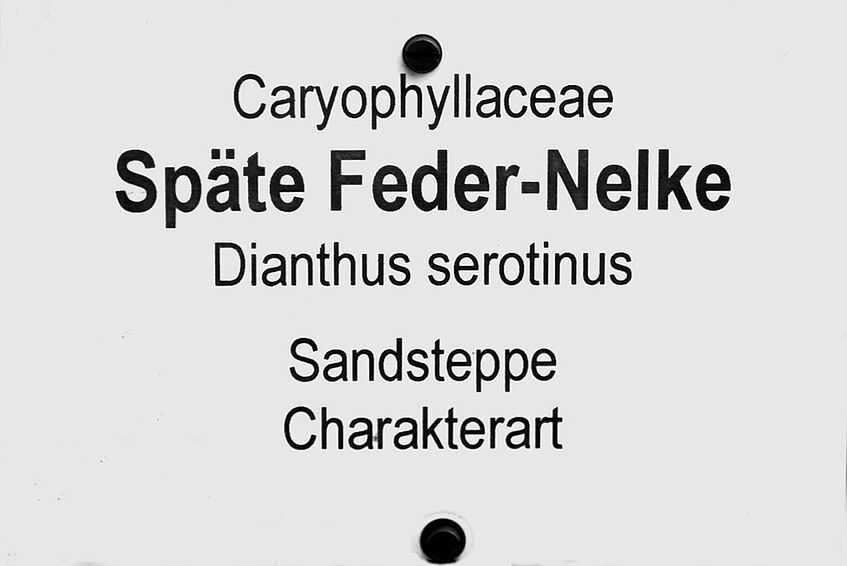The plant label

Pflanzenetikett © BGUW_R. Hromniak

Pflanzenetikett © BGUW_R. Hromniak

Pflanzenetikett © BGUW_R. Hromniak

Pflanzenetikett © BGUW_R. Hromniak
The plant label
The plant labels carry indispensable information about the plants on display in the Botanic Garden. Each label shows the minimum necessary data, and sometimes additional information. Its content structure is not the same for all exhibits; for instance, labels in the Pannonian Collection and the Economic Plants Collection follow a different basic scheme.
The basic scheme, using Quercus cerris as an example, is as follows: the plant family to which the plant belongs is quoted first. In our example this is the beech family, or Fagaceae to give the botanical name. Botanical family names have the ending "...aceae" and so are easily recognized. The Fagaceae family includes not just the beech (botanical name Fagus, hence the name of the family) but also oaks, the European chestnut, and a few other genera that occur outside of Europe.
The scientific name of the plant is written on the next line. This name comprises a minimum of two words: the genus followed by the species. In our example the genus name is Quercus (the name given to the oak genus) and the species name is cerris which distinguishes it from the roughly 400 different oak species worldwide. In this case the English name is the Turkey oak, a species occurring in eastern Austria in the warm, dry forests. After the scientific name follows the author; the (usually abbreviated) name of the botanist who described this plant species and coined its scientific name for the first time. This information is not an intrinsic part of the scientific name. The abbreviation "L." stands for the botanist Carl von Linné, also known as Linnaeus. He is the nomenclatural author as he was the first to give Quercus cerris this name and to describe it scientifically. There is a standardised list of author abbreviations, which enables consistent usage worldwide.
If there are additional sub-divisions of a given species, you will find the name of a subspecies (subsp. or ssp.) after the species name or that of a variety (var.) followed by the name of the author who described the plant first.
The second example (plant label of Vincetoxicum nigrum) has an abbreviated name in brackets directly after the scientific name of the plant, the so-called "parenthetical author", followed by a name without brackets. In our example this species of milkweed was described first under the scientific name Asclepias nigra. Previously valid names can be found in specialized scientific literature; they are always listed after the currently accepted name. Thus the author in brackets is the person who named and, in most cases, also described the species for the first time. In our example the first classification of the species belonging to Asclepias was perceived to be incorrect later, so it was placed in the genus Vincetoxicum. The author name without brackets is that of the scientist responsible for this change and also for the (currently) valid name. This is in our example Moench (Conrad Moench, German botanist and chemist, 1744-1805) who gave this milkweed the current valid name Vincetoxicum nigrum.
The German name usually follows in the next line of the plant label. However, there are no German names for many plants, so this information is missing on those plants' labels. Quite often there are also difficulties with indigenous plants: those with a broad distribution range might have 10, 20 or more vernacular German names, which are often very different from each other. It was this regional diversity of common names that particularly paved the way for a scientific nomenclature that attributed a single, internationally accepted name to each plant. Therefore a German name is not an obligatory part of a plant label. In our second example you can also see an English and a Japanese name besides the German name.
Finally, the main area of distribution of the plant species in nature is given in abbreviated form.
The digits on the lower left corner are a code for the location of the plant in the garden.
Another example shows a label from the Economic Plants exhibit, Salvia officinalis. Here the information is structured somewhat differently. The German name is in the first position, followed by the scientific name with genus and species on the second line. The nomenclatural author is also given, as is information on the natural distribution of this useful plant, and the plant family to which it belongs. In addition, the uses of the plant are listed. On our example label of Salvia officinalis we find the following abbreviations:
Gw = spice plant (Gewürzpflanze);
äÖ = plant producing ether oils (ätherisches Öl);
off = used for medicinal and pharmaceutical purposes (offizinelle);
VH = used in folk medicine (Volksheilmittel).
All the abbreviations are listed in tables at the Economic Plant exhibit. They are also explained in the Small Garden Guide available in German from the gatekeeper near the Mechelgasse entrance.
On plant labels in the Pannonian exhibit (with Dianthus serotinus as an example) the plant family to which the corresponding species belongs is given first. The German name comes next followed by the botanical name. Then its affiliation with a particular biotope is given as a special feature of this type of label. The "late carnation" (German: Späte Feder-Nelke) has its natural habitat in sandy steppe. When the various plant habitats for the Pannonian Exhibit were established great care was taken to model the corresponding biotopes as closely to nature as possible and to arrange the plantings accordingly.
At the end of the label of Dianthus serotinus you will find the word "Charakterart" (characteristic species). This term originates from plant sociology, dealing with the scientific exploration and holistic characterization of the vegetation. Characteristic species are recognized as particularly representative of certain plant communities, meaning that they exclusively grow in these groupings or have a distinct focus of occurrence. The plant community in which our Dianthus serotinus occurs as a characteristic species is called "danubiale sandy grassland" (Festucetum vaginatae).
There has been no space to include the nomenclatural author on the labels of the Pannonian Exhibit. This corresponds also to the procedure exercised in the current excursion flora for Austria.
